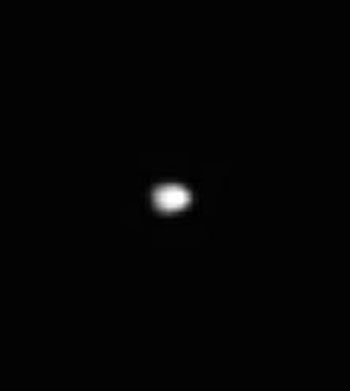
Spaceflight Now +

|

|

|

|

Premium video content for our Spaceflight Now Plus subscribers.

Planes track Discovery
 To gain a new perspective on space shuttle Discovery's ascent and gather additional imagery for the return to flight mission, NASA dispatched a pair of high-flying WB-57 aircraft equipped with sharp video cameras in their noses. To gain a new perspective on space shuttle Discovery's ascent and gather additional imagery for the return to flight mission, NASA dispatched a pair of high-flying WB-57 aircraft equipped with sharp video cameras in their noses.

 Full coverage Full coverage

Rocket booster cams
 When space shuttle Discovery launched its two solid-fuel booster rockets were equipped with video cameras, providing dazzling footage of separation from the external fuel tank, their free fall and splashdown in the sea. When space shuttle Discovery launched its two solid-fuel booster rockets were equipped with video cameras, providing dazzling footage of separation from the external fuel tank, their free fall and splashdown in the sea.

 Full coverage Full coverage

Discovery ferried home
 Mounted atop a modified Boeing 747, space shuttle Discovery was ferried across the country from Edwards Air Force Base, California, to Kennedy Space Center, Florida. Mounted atop a modified Boeing 747, space shuttle Discovery was ferried across the country from Edwards Air Force Base, California, to Kennedy Space Center, Florida.

 Full coverage Full coverage

Shuttle tank returned
 Shuttle fuel tank ET-119 is loaded onto a barge at Kennedy Space Center for the trip back to Lockheed Martin's Michoud Assembly Facility in New Orleans. The tank will be used in the investigation to determine why foam peeled away from Discovery's tank on STS-114 in July. Shuttle fuel tank ET-119 is loaded onto a barge at Kennedy Space Center for the trip back to Lockheed Martin's Michoud Assembly Facility in New Orleans. The tank will be used in the investigation to determine why foam peeled away from Discovery's tank on STS-114 in July.

 Full coverage Full coverage

Delta 4 launch delayed
 Launch of the GOES-N weather observatory aboard a Boeing Delta 4 rocket is postponed at Cape Canaveral, Florida. Launch of the GOES-N weather observatory aboard a Boeing Delta 4 rocket is postponed at Cape Canaveral, Florida.

 Full coverage Full coverage

Mars probe leaves Earth
 The Mars Reconnaissance Orbiter lifts off aboard a Lockheed Martin Atlas 5 rocket from Cape Canaveral's Complex 41. The Mars Reconnaissance Orbiter lifts off aboard a Lockheed Martin Atlas 5 rocket from Cape Canaveral's Complex 41.

 Full coverage Full coverage

 Become a subscriber Become a subscriber
 More video More video

|

|

|

|
|

|

Squinting at Telesto
CASSINI PHOTO RELEASE
Posted: September 14, 2005

Credit: NASA/JPL/Space Science Institute
|
The blob of light seen here is Saturn's moon Telesto, which shares its orbital path with the much larger moon Tethys. Telesto is 24 kilometers (15 miles) across.
Although this view may hint at a flattened, potato-like shape for Telesto (a common shape for Saturn's smaller moons), no features on the moon's surface can be resolved here.
The image was taken in visible green light with the Cassini spacecraft narrow-angle camera at a distance of approximately 768,000 kilometers (477,000 miles) from Telesto and at a Sun-Telesto-spacecraft, or phase, angle of 37 degrees. Resolution in the original image was 5 kilometers (3 miles) per pixel. The image has been contrast-enhanced and magnified by a factor of four to aid visibility.
The Cassini-Huygens mission is a cooperative project of NASA, the European Space Agency and the Italian Space Agency. The Jet Propulsion Laboratory, a division of the California Institute of Technology in Pasadena, manages the mission for NASA's Science Mission Directorate, Washington, D.C. The Cassini orbiter and its two onboard cameras were designed, developed and assembled at JPL. The imaging operations center is based at the Space Science Institute in Boulder, Colo.
|

|

|

|
|



